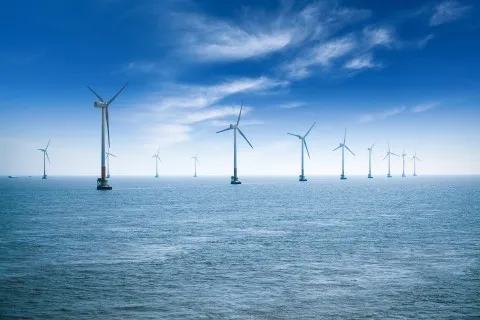
11 Chinese firms owned 63% of wind capacity additions in 2017
China’s grip on the market was strengthened by the CHN Energy merger.
Eleven 11 Chinese companies kept their grip on 63% of wind capacity additions in 2017, putting China at the lead of the global wind asset market again, Wood Mackenzie Power & Renewables revealed.
According to its study, Chinese asset owners continue to dominate the global wind power sector following the merger of former top-ranked power producer Guodian Group and seventh-ranked mining and energy company Shenhua into industrial titan CHN Energy.
“Despite the conglomerate’s heavy focus on coal extraction and coal power generation, its wind fleet is more than twice as large as second-ranked utility Iberdrola’s,” said lead author Anthony Logan, research analyst, North America Wind.
Wood Mackenzie Power & Renewables Asia Pacific team analyst Xiaoyang Li noted that many turbines installed during recent years of breakneck growth in China’s wind sector are reaching the end of their turbine OEM (manufacturer) warranty period.
“This coming transition, coupled with the low prices seen at new wind energy tenders, is forcing large asset owners to prioritise availability and annual energy production, driving a significant focus on operations and maintenance,” she said.
The analyst also observed that Chinese asset owners, which have been long confined to their domestic market, are now looking to build and buy wind assets abroad. “Australia has been a particularly attractive overseas market, thanks to its open market and high project profits,” she said.
The report also found that in offshore wind, four large utilities dominate the capital-intensive market, typically developing and selling off around 50% of their projects to a more fragmented pool of institutional investors. “The growth of the offshore wind sector will affect asset ownership in the Asia Pacific from 2022 onwards, boosting the utility market share in Japan and South Korea,” it said.
For the rest of Asia Pacific, wind asset owners remained tied to their domestic markets, with no activity in other key markets of the region, with the exception of Eurus Energy. The report noted that Siemens Gamesa Renewable Energy consolidated its market-leading position in India.
Due to increasing competition, leading asset owners in Australia did not add new capacity in 2017. Large Australian states, in particular, also had difficulty in catching up to world leaders in improving the share of renewables in their energy mix.
As a forecast, the report said that China will see an increase in ownership share by the turbine OEM segment due to the gradual erosion of the IPP segment. “Most Tier I and II turbine OEMs have already reserved wind sites to develop internal wind projects and are looking for development opportunities in the distributed wind power market,” it concluded.



















 Advertise
Advertise







